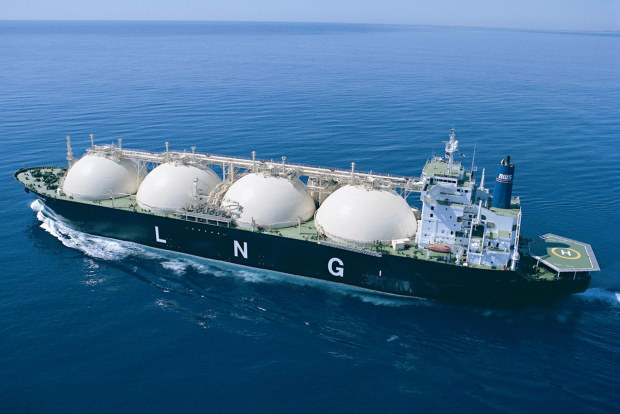ACCC picks fight with gas exporters over domestic supplies
Competition cop Gina Cass-Gottlieb says Queensland gas exporters plan to use increasing amounts of domestic gas to meet commitments to foreign buyers.
Competition cop Gina Cass-Gottlieb has picked a fight with Australia’s top energy companies over data she says shows they are planning to increasingly use gas produced for domestic purposes to meet commitments to foreign buyers.
Queensland’s three major LNG exporters are forecast to collectively source 10 times more gas annually from the domestic market in 2035 than they will this year, according to previously unreported figures published by the Australian Competition and Consumer Commission.

Queensland gas exporters intend to buy from the domestic market to meet export shortfalls.
ACCC chairwoman Gina Cass-Gottlieb said data the regulator released on notice to Greens senator Nick McKim was intended to show that the three exporters – Shell-backed QCLNG, Santos-backed GLNG and Origin’s APLNG – were buying domestic gas to sell abroad.
“One of the key elements we are seeking to prove in [the data] is that [the exporters] extract gas also from third-party suppliers who would otherwise be domestic suppliers of gas,” she told a Senate hearing late on Wednesday.
“We treat that as a negative contribution [to the domestic market], because they not only extract and supply in LNG from their own production, but also other third-party sources of gas, which is then liquefied in their plants and exported.”
The revelations come amid continued warnings from the energy market operator and industrial customers about supply problems in Australia’s east coast gas market.
The Queensland exporters use gas from their own reserves to supply LNG terminals in Gladstone, where it is shipped abroad to service long-term contracts with foreign buyers. However, they also make purchases from and contributions to the domestic gas market, depending on supply levels.
The ACCC data, which was based on confidential forecasts provided to it by the companies as part of the regulator’s gas inquiry, showed that by 2035 the exporters plan to collectively source 10 times more gas annually from the domestic market than they will this year.
The data combines forecasts collected from all three LNG producers and does not provide a breakdown of the contributions of individual companies.
The head of the peak industry body for Australia’s gas producers, Samantha McCulloch, said the data did not include the significant volumes of gas that the LNG exporters supplied in the domestic spot market, where it is traded for short-term use.
She also said the ACCC was incorrect to treat the purchases as negative contributions, arguing many domestic gas projects relied on supplying the Queensland exporters for their viability.
“Significant volumes of Queensland’s gas from third-party suppliers is produced under long-term supply agreements with LNG producers, which the ACCC counts as purchases from the domestic market. This is despite the fact that much of this gas would not have been produced without a LNG supply agreement in place.”
The ACCC and the Australian Energy Market Operator have repeatedly warned that new gas supply is required to avoid shortages on the country’s east coast as soon as 2026, particularly in Victoria. In its 2024 Gas Statement of Opportunities, the energy market operator forecast a Victorian shortfall of 10 petajoules in 2027, and 158 petajoules by 2035.
According to the new ACCC figures, the exporters in 2025 plan to supply 156 petajoules of gas to the domestic market to meet commitments made to local consumers but will buy 178 petajoules from third-party sources, meaning on a net basis they will draw 22 petajoules from east coast supplies.
The companies expect the net shortfall to balloon to 209 petajoules by 2035. By contrast, in 2018 the Queensland producers made a combined net contribution to the east coast market of 90 petajoules.
Australia’s eastern states are forecast to consume just over 1800 PJ of gas in 2025, according to the July 2024 report of theACCC’s gas inquiry.
According to Greens leader Adam Bandt, the ACCC’s figures show any expected futureVictorian gas shortfallscould be entirely avoided by disallowing the Queensland producers’ purchases of domestic gas to meet export contracts, rather than opening up new gas fields.
But energy analyst Rick Wilkinson said that even if the exporters were forbidden from tapping domestic sources for foreign supply, pipeline constraints and inadequate storage facilities meant the southern states would still struggle to get gas when it was needed, especially during winter.
The squabble over domestic supplies comes as opposition resources spokeswoman Susan McDonald on Friday said the Coalition would make a “bucket load” of new gas approvals contingent on assurances over domestic supply.
Resources Minister Madeleine King said the Coalition’s plan was a “bin fire of a gas policy” that showed a lack of knowledge about how the system works.
“The Coalition say they’re going to bring a bucket load of gas on but there’s no plan to do it,” King said. “They’ve given no indication of how they might achieve that with the state governments.”
Source: AFR
https://www.afr. com/companies/energy/accc-picks-fight-with-gas-exporters-over-domestic-supplies-20250226-p5lfhv !
0.4¢
!
0.4¢
 (20min delay)
(20min delay)





